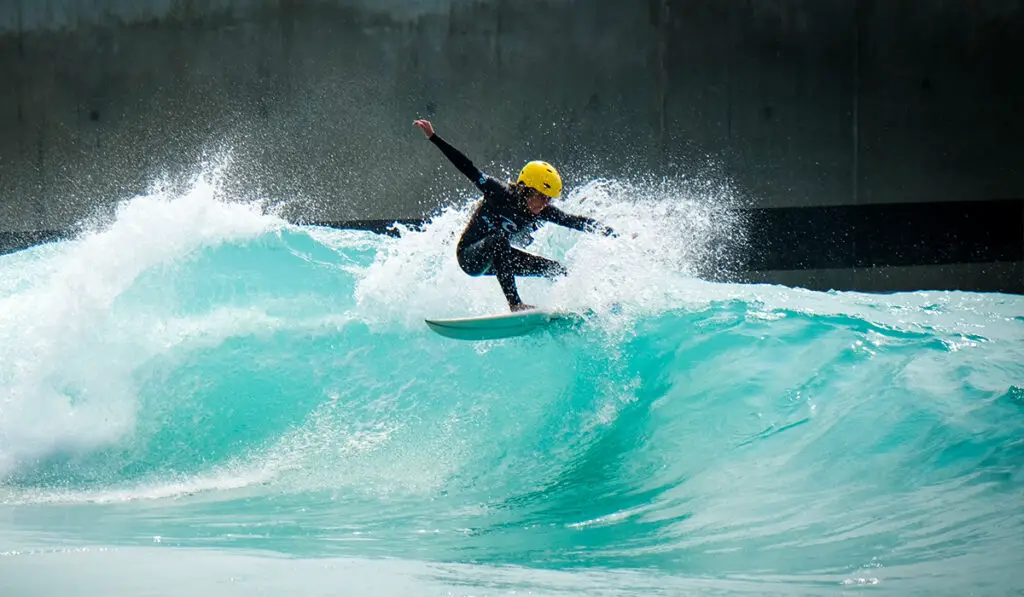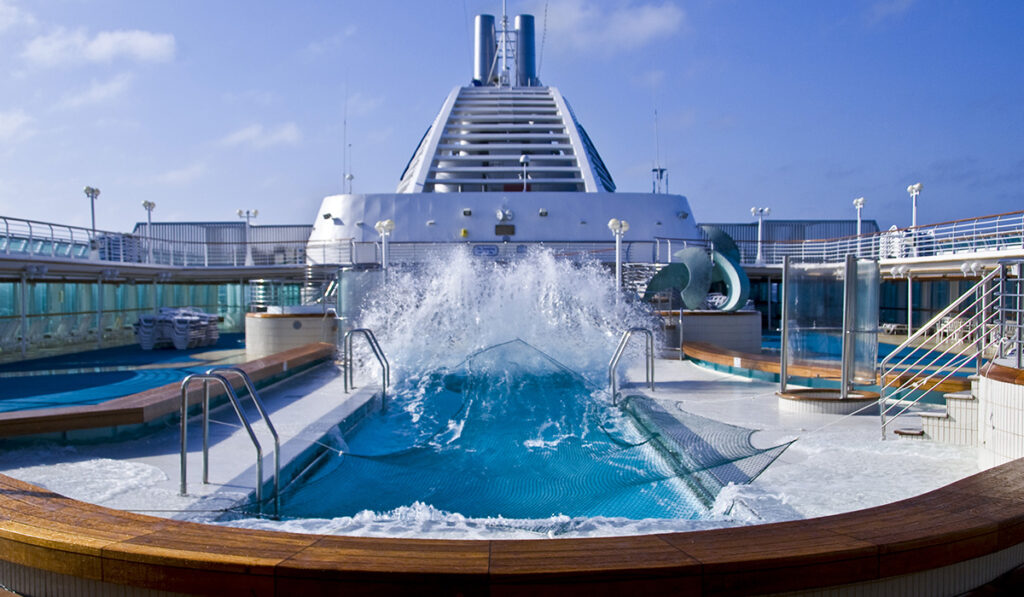Anyone who misses surfing when they are not near the beach can be satisfied with a wave pool. These are not new phenomena. Wave pools have been in existence since the 1980s and are now accessible around the world for those that wish to enjoy manmade waves.
There are a variety of methods used to create waves in a wave pool. The most common method is to force air through the water while also using a large plunger to move the water in one direction. While you can install a wave pool at home, it requires lots of space for equipment and is expensive.
As well as knowing how a wave pool works and the various types, this guide will help you know how to install one correctly, care for one, and what dangers to look out for. Let’s look at all the information you should know about wave pools.
How Does a Wave Pool Work?

Although natural sea waves are out of reach for most of us, that doesn’t make it impossible to enjoy waves at home or at a local aquatic center.
Waves pool allows you to enjoy surfing and other wave activities wherever you are. It is difficult to find the same satisfaction you feel from natural crashing waves, but the mimicking of waves in wave pools is phenomenal, so much so that you will feel the same motion and achieve a very similar experience.
Natural waves occur when air pushes through the water, creating a swell at certain points, which results in a crashing wave. Wave pools mimic the same action by pushing air through the water.
Wave pools use powerful blasts of air and either an oscillating plunger or a rotating plunger to create similar periodic disturbances on the water’s surface. This all happens below the floor of the pool in a pump room. The air is pushed through pipes into the water the create ripples.
Some systems will create small waves. To make larger waves, more water is pumped through to the deeper end of the wave pool to create a bigger pressure surge.
What Are the Different Types of Wave Pools?
There are various technologies used in wave pools to mimic the natural crashing of sea waves, which are as follows:
Air Compression
Air compression wave pools work by wind pushing into concrete chambers by a pressurized vacuum.
The pressure is released through the opening at the bottom of the pool, which creates a water swell. The specialized jets can be directed in any way, which allows the air compression system to create various types and sizes of waves.
Levers
A lever wave pool uses small wavers inside a module to push out waves. These levers create a swell in the water, mimicking real waves. The levers work harmoniously to maximize the energy to ensure consistent and strong waves. Behind the levers is specialized software, which can alter each wave’s power, shape, and size.
Hydrofoil
Hydrofoil wave pools use technology similar to that of an airplane. They utilize galvanized steel blades pulled underneath the water along a steel track. The blades move through the middle or sides of the water using a driverless system.
While the blades are being pulled (in the chosen direction), they push the water to create manmade waves.
Water Dumping
Water dumping wave pools work by a reservoir tank pumping out excess water when it becomes too full. When the water tank becomes too full, the water will be displaced immediately. The displacement of the water creates a wave.
This type of wave pool doesn’t have control over the size or shape of the wave. Yet, the fuller the tank becomes, the more waves will be created, which can be useful for larger wave pools.
Plunger
Plunger wave pools create waves using compressed air, pushing strongly through a large plunger to create waves. The waves will be displaced as rings, miming natural sea waves. Most plunger wave pools diffuse the waves from the center, pushing the waves sideways, similar to the ocean.
Rotating Fan
A rotating fan wave pool works by water being pushed around by a rotating fan. This motion will result in the formation of one continuous wave.
Do Wave Pools Use Chlorine?
Unlike the waves at the beach, waves in a wave pool are chlorinated. It is safe to use chlorine in wave pools. Like standard pools, chlorine in wave pools helps to eliminate bad bacteria, prevent the spread of algae, and reduce debris.
When adding chlorine to a wave pool, following the guidelines on the chosen product is recommended. After that, ensure to test the levels regularly to guarantee it is safe and effective. If you use too much chlorine, it can damage your skin and eyes. Furthermore, too little chlorine will not effectively keep the water clean.
A pool test kit like this one (on Amazon) will help you test and measure your chlorine levels to keep them balanced and safe.
How Deep is a Typical Wave Pool?
Wave pools vary in size, depending on the technologies used and personal preference. It is common for residential wave pools to be between five and six feet deep. They are not as deep as standard swimming pools designed for surfing use.
Some specialty wave pools, usually found in water parks, can be up to 12 feet deep. These are rarer, however, than the 5-6ft deep wave pools found in most aquatic centers.
Can You Install a Wave Pool at Home?

It is not advised to install a wave pool at home. However, it is possible if you have a lot of space for all the required technology.
Once a small pool is installed, you must invest in and professionally install wave pool technology. You can choose various types of technology depending on your needs.
Special equipment will help blast pressurized water to the pool’s surface. You can use technology to create small or big waves, which depends on your desires. Small waves are easy to create, using small paddles and a lever system.
What Are the Dangers of Wave Pools?
When used correctly, wave pools pose little danger. However, there are some potential dangers for wave pool users or owners to be aware of.
- Contaminated water. If you use a local wave pool, you might not know what is in the water. Contaminated water can be common if the wave pool isn’t cleaned efficiently or the water isn’t chlorinated. Use a clean and safe local wave pool to maximize your health and safety.
- Accidents. Due to wave pools offering manmade waves, which can push you around, they can pose the risk of accidents. Using them safely and avoiding messing around is crucial to maintain safety.
- Ensure someone is watching. Someone must be watching if you decide to use a local wave pool or allow your children to use them at home. Again, wave pools can be dangerous, so ensure someone is watching if an incident occurs.
- High chlorination. Like all pools, wave pools could be dangerously chlorinated. If you use too much chlorine, the water could burn your skin and eyes. Therefore, follow the instructions and regularly test the water to maintain a safe chlorine level. It is advised to test the water in any pool daily or as often as possible to maintain safety.
Why Use Or Invest In A Wave Pool?
Should you be a keen surfer and lack access to the beach, a wave pool is the best chance to practice surfing. It is common for professional surfers to use them for practice, but they are also just fun to play in and pretend you are at a beach!
They are the closest comparison to natural sea waves. Although the waves are manmade, they can be strong, big, and fun enough to make it feel like you are surfing. Therefore, using a local wave pool or investing in your own for your home is a great idea if you wish to pursue your love for surfing whenever you wish.
